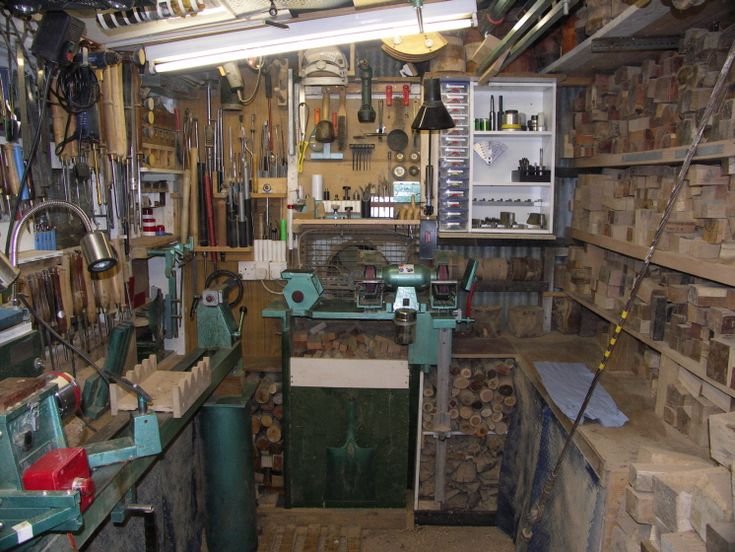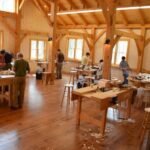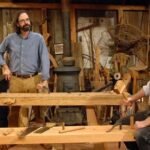The Steel Straight Edge Saga
So, pull up a chair, grab a cup of coffee—I’m on my third cup today, so this could get interesting. Let me tell you about the time I decided to take the plunge into woodworking with a steel straight edge. You might think, “What’s the big deal about a straight edge?” but let me tell you, it’s more than just a piece of metal—it’s a tool that made me sweat, smile, and sometimes, just question my sanity.
The First Attempt
It all started last summer. I had this grand vision of building a rustic farmhouse table for my dining room. I had seen all these photos online, you know the ones—the kind that make you think you can go from novice to master craftsman with just a few cuts and some sandpaper. I had my old circular saw, a jigsaw that was temperamental at best, and a whole heap of pine wood that I thought would do the trick. The smell of raw wood, that sweet, earthy scent—it was almost intoxicating.
So, one sunny Saturday morning, I rolled up my sleeves and began cutting the pine. Everything was going smoothly, music blaring from my old radio, and I was feeling like a real Bob Vila. But then, the moment of truth arrived. I laid all my pieces out and realized things weren’t lining up quite right. I mean, let’s be honest, they weren’t even close. I could just hear an obnoxious note in my mind, like a drummer who can’t find the beat.
That’s when I decided to grab my steel straight edge, which I’d just ordered from Amazon after hearing it was a “must-have” from some woodworking forum. It’s about four feet long—heavy, sleek, and intimidating, really. The first time I picked it up, I thought, “How hard could it be?” Oh boy, was I in for a lesson.
The Line of Truth
I tried using that straight edge to mark my cuts, hoping it would guide me to some semblance of perfection. But here’s the kicker: I didn’t realize you can’t just slap it down on the wood and hope for the best. You’ve got to keep it anchored, and man, my hands were shaking like a leaf on a windy day. As I traced my pencil down the edge, I found myself doubting every move. “What if I screw this up?” I thought, and you know what? I did screw it up.
You’d think a straight edge would make things easier, right? But my shaky pencil line ended up looking like a drunk snake! When I made the cut, I stared at the jagged edge, and I almost gave up right then and there. I remember standing in my garage, just staring at that sloppy piece of wood, thinking maybe I was meant to just buy a tabletop from IKEA.
The Lesson
But as fate would have it, I took a deep breath, brewed another cup of coffee, and looked at that steel straight edge again. I thought, “Okay, I need to calm down and take a step back.” I realized I wasn’t using enough pressure to keep the straight edge steady. A slight adjustment and—who would’ve guessed?—things started to line up. I laughed when it actually worked, like I was in some weird woodworking sitcom and finally found my groove. Sometimes, it’s the little victories that make you feel like a champ.
With that steel straight edge working in my favor, I finally got a decent cut. It felt like the wood gods were smiling down on me, and man, that feeling of accomplishment after overcoming that chaos? Priceless. But, you know, it wasn’t all sunshine and roses. Next came the sanding and finishing, and let me tell you, nothing smells better than freshly cut or sanded wood, but I was knee-deep in sawdust and fumes.
The Final Product
Missing the mark a few times taught me more than just technique. I learned patience, perseverance, and how to embrace the messiness of learning. In the end, that rustic farmhouse table turned out beautiful, in its own imperfect way. It has character, like a friendly dog with a crooked tail; a few bumps and bruises tell stories that made me who I am today as a woodworker.
Now, whenever I look at that table, I don’t just see wood—I see the long hours, the sweat, the coffee breaks, and even the doubt. But mostly, I see the triumph over a trial that felt almost too big for me at the time. It’s that steel straight edge that kept me from veering too far off course, both literally and figuratively.
A Friendly Reminder
So, if you’re thinking about diving into woodworking, or if you’ve already dipped your toe in and found yourself treading water, just go for it. Don’t let a miscut or a wobble discourage you. Find your own steel straight edge—be it a tool, a friend, or a lesson you learn the hard way. Just keep building, keep creating, and enjoy every moment. Trust me, there’s a special kind of happiness in making something with your own two hands, even if it’s not perfect. And who knows? You might just surprise yourself.










